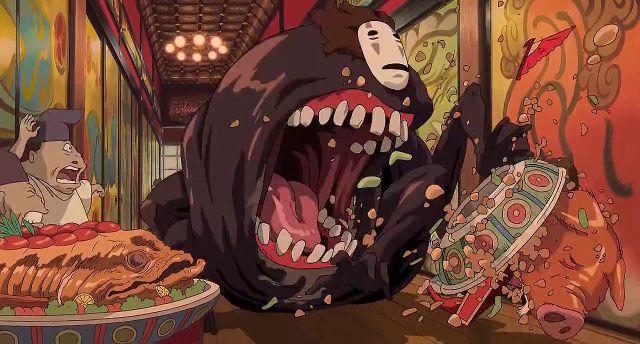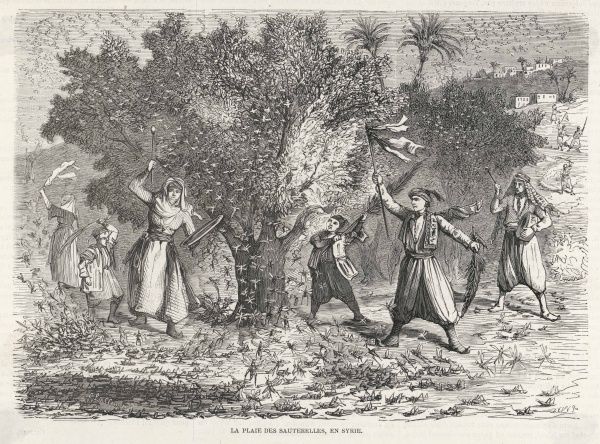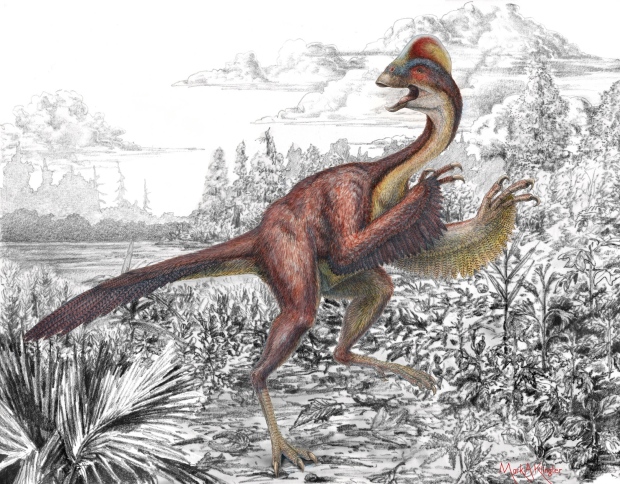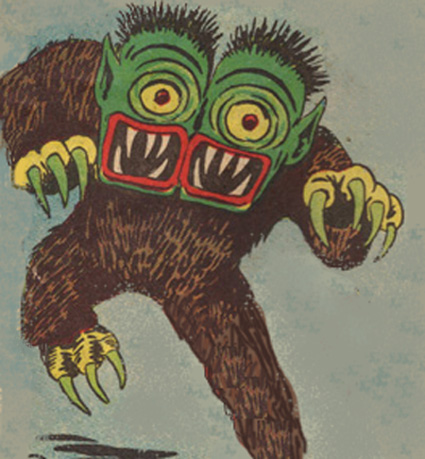The Sixth Day
On day six, I take a bit from Igbo culture, but with little emphasis on accuracy. The ọgbanje is an evil spirit that is born into a child’s body, which then dies prematurely to be reborn in another child’s body, bringing sorrow to the family the ọgbanje has chosen to plague. The ọgbanje, so I’ve read, are referenced in Chinua Achebe’s first novel, Things Fall Apart, a tale set in pre-colonial Nigeria. I’ve not read the novel, but I’ve read good things about it. It’s on my Amazon wishlist.

On the sixth day of searching / My party came upon: / six vile ọgbanje, / five hungry things, / four burning swarms, / three hell birds, / two bloodmad zogs, / and a birchwrath in a fell wood.
The ọgbanje is a demon that changes places with a young child, often an infant. It spreads disease and suffering for a time, and then departs, leaving behind that the child’s corpse. The ọgbanje rarely associates with others of its kind, but it is not unknown that a larger community may attract the attention of several ọgbanje, often as a result of an evil curse.
AD&D Version
Frequency: Very rare
No. Appearing: 1 (10% chance of 2-8)
Armor Class: 8
Move: 15″
Hit Dice: 3
% in Lair: 5%
Treasure Type: R
No. of Attacks: 1
Damage/Attack: 1-3
Special Attacks: See below
Special Defenses: See below
Magic Resistance: 25%
Intelligence: Very
Alignment: Chaotic evil
Size: S (1′ to 2′ tall)
Psionic Ability: Nil
Attack/Defense Modes: Nil
Level/XP Value: IV/200 + 3/hp
The ọgbanje resembles a young human child, a role that it plays with consummate skill (imitating a specific child with 90% accuracy). Its senses of hearing and smell are exceptional, and its sense of sight is supernatural. The ọgbanje is surprised only 1 in 6 times, and it can detect invisibility. Its evil nature is hidden from divination by a continuous obscure alignment. The ọgbanje has several supernatural powers, which it can employ at will, one at a time, during a turn or melee round as applicable: audible glamer, emotion, ESP, misdirection, non-detection, putrefy food and drink, and suggestion. Once per day, it may cause disease and change sticks to snakes, the latter as if the ọgbanje were a 10th-level cleric.
If forced to fight, the ọgbanje takes half damage from cold, lightning, and fire. It bites with retractable fangs. Its bite forces a saving throw versus poison. The ọgbanje can also spit venom, spraying it up to 3″ at any single creature, which must make a saving throw versus poison.
In its natural form, to which it reverts if slain, the ọgbanje resembles a child-sized monster with a squat, bloated body, spindly limbs, and a gaunt, noseless face.
5E D&D Version
Small fiend (demon, shapechanger), chaotic evil
Armor Class 14
Hit Points 18 (4d6+4)
Speed 40 ft.
Ability Scores STR 8 (-1), DEX 18 (+4), CON 12 (+1), INT 12 (+1), WIS 14 (+2), CHA 16 (+3)
Skills Deception +5, Insight +4, Perception +4, Persuasion +5, Stealth +6
Damage Resistances cold, fire, lightning; bludgeoning, piercing, and slashing from nonmagical attacks
Damage Immunities poison
Condition Immunities poisoned
Senses darkvision 60 ft., passive Perception 14
Languages Abyssal, Common
Challenge 2 (450 XP)
Innate Spellcasting. The ọgbanje’s innate spellcasting ability is Charisma (spell save DC 13). It can innately cast the following spells, requiring no material components:
Continous: see invisibility
At will: fear, nondetection, suggestion
1/day: contagion
Keen Hearing and Smell. The ọgbanje has advantage on Wisdom (Perception) checks that rely in hearing or smell.
Magic Resistance. The ọgbanje has advantage on saving throws against spells and other magical effects.
Shapechanger. The ọgbanje can use its action to polymorph into any Tiny or Small humanoid it has seen, or back into its true form. Its statistics are the same in each form, except perhaps for its size. While in humanoid form, the ọgbanje is immune to any effect that would sense its emotions or read its thoughts, as well as any divination spell that it refuses. Any equipment it is wearing or carrying isn’t transformed. It reverts to its true form if it dies.
Actions
Bite. Melee Weapon Attack: +6 to hit, reach 5 ft., one creature. Hit: 6 (1d3+4) piercing damage, and the target must make a DC 14 Constitution saving throw, taking 9 (2d8) poison damage on a failed save, or half as much on a successful one.
Spittle. Ranged Weapon Attack: +6 to hit, range 10/40 ft., one creature. Hit: 4 (1d8) poison damage, and the target is blinded until the end of its next turn. The target must make a DC 14 Dexterity saving throw. The target takes half as much damage and isn’t blinded with a successful save.
Read Thoughts. The ọgbanje magically reads the surface thoughts of one creature within 60 feet of it. The effect can penetrate barriers, but 3 feet of wood or dirt, 2 feet of stone, 2 inches of metal, or a thin sheet of lead blocks it. While the target is in range, the ọgbanje can continue reading its thoughts, as long as the ọgbanje ‘s concentration isn’t broken (as if concentrating on a spell). While reading the target’s mind, the ọgbanje has advantage on Wisdom (Insight) and Charisma (Deception, Intimidation, and Persuasion) checks against the target.
Snake Swarm (1/Day). The ọgbanje magically calls a swarm poisonous snakes. The called creatures arrive in 1d4 rounds, acting as allies of the ọgbanje and obeying its spoken commands. The beasts remain for 1 hour, until the ọgbanje dies, or until the ọgbanje dismisses them as a bonus action.




